
Sustainable, durable, and affordable—these are a few of the benefits of bamboo floors. Here’s a breakdown of bamboo flooring costs to consider.
Keeping the planet green can be taken in stride


From ditching bottled water to driving a hybrid, many of us have increased our focus on environmentally friendly habits. However, it’s easy to overlook the importance of choosing eco-friendly flooring. After all, not everyone pays close attention to what they walk on every day. If you want to expand your “green” horizons with every step, consider one of our favorite choices for eco-friendly flooring options.
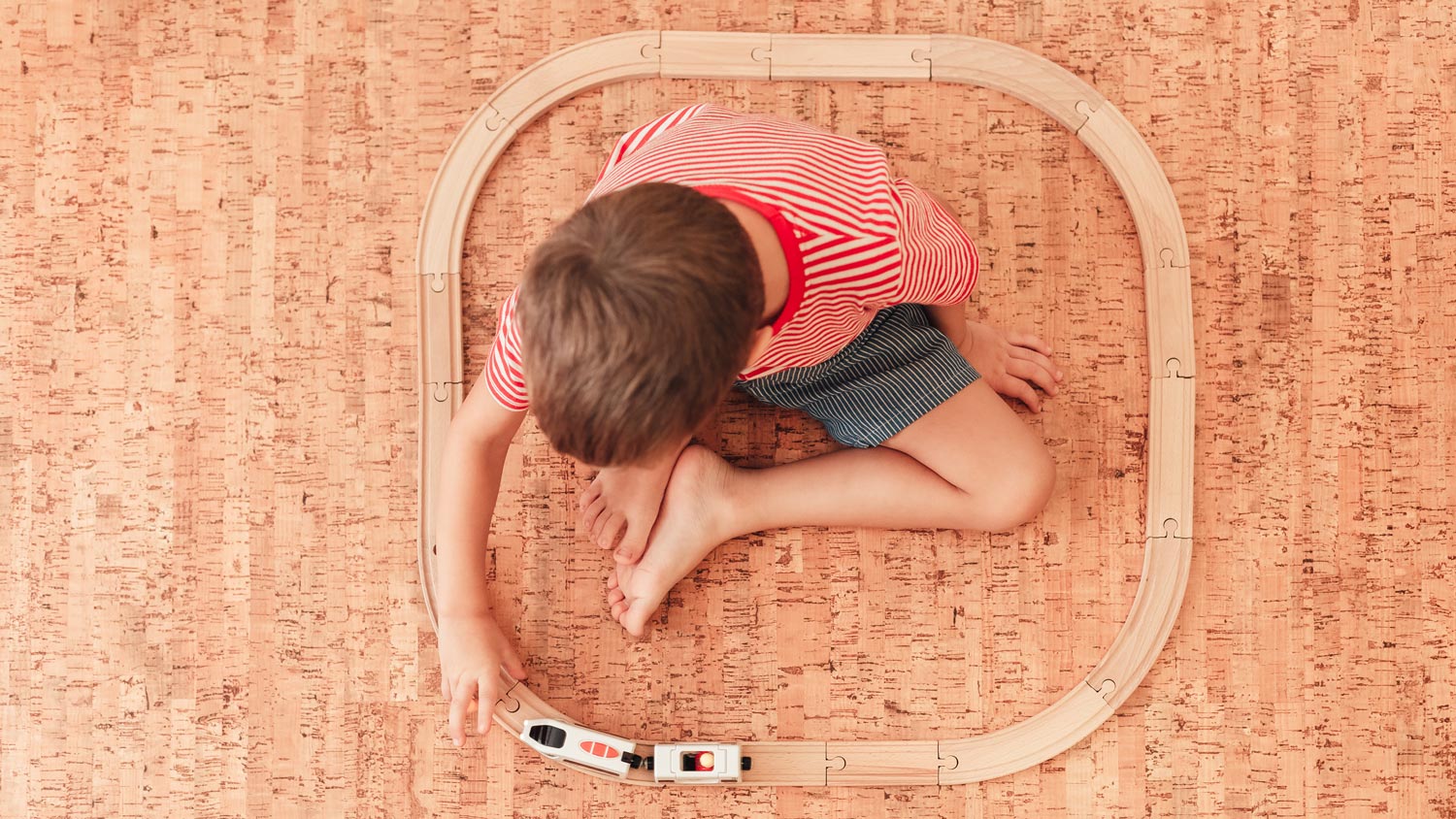
Yes, we’re talking about that cork—the one that’s keeping your wine nice and fresh. Thanks to its soft feel underfoot, noise-dampening qualities, and affordability, cork flooring has been gaining popularity. This is especially true for homes with young kids, as cork may help reduce the overall noise level in a home. However, that same softness and absorbency does leave it vulnerable to scratching and fading.
| Pros | Cons |
|---|---|
| Affordable—may cost as little as $3 per square foot | More susceptible to scratches and dents |
| Comfortable underfoot | Unique look that doesn’t work with all aesthetics |
| Click-together cork planks are an easy DIY project | Some types of cork flooring require professional installation |
| May absorb some sound | May fade when exposed to sunlight |
Best for: DIYers looking for an affordable flooring option or those looking for a soft and sound-absorbent floor
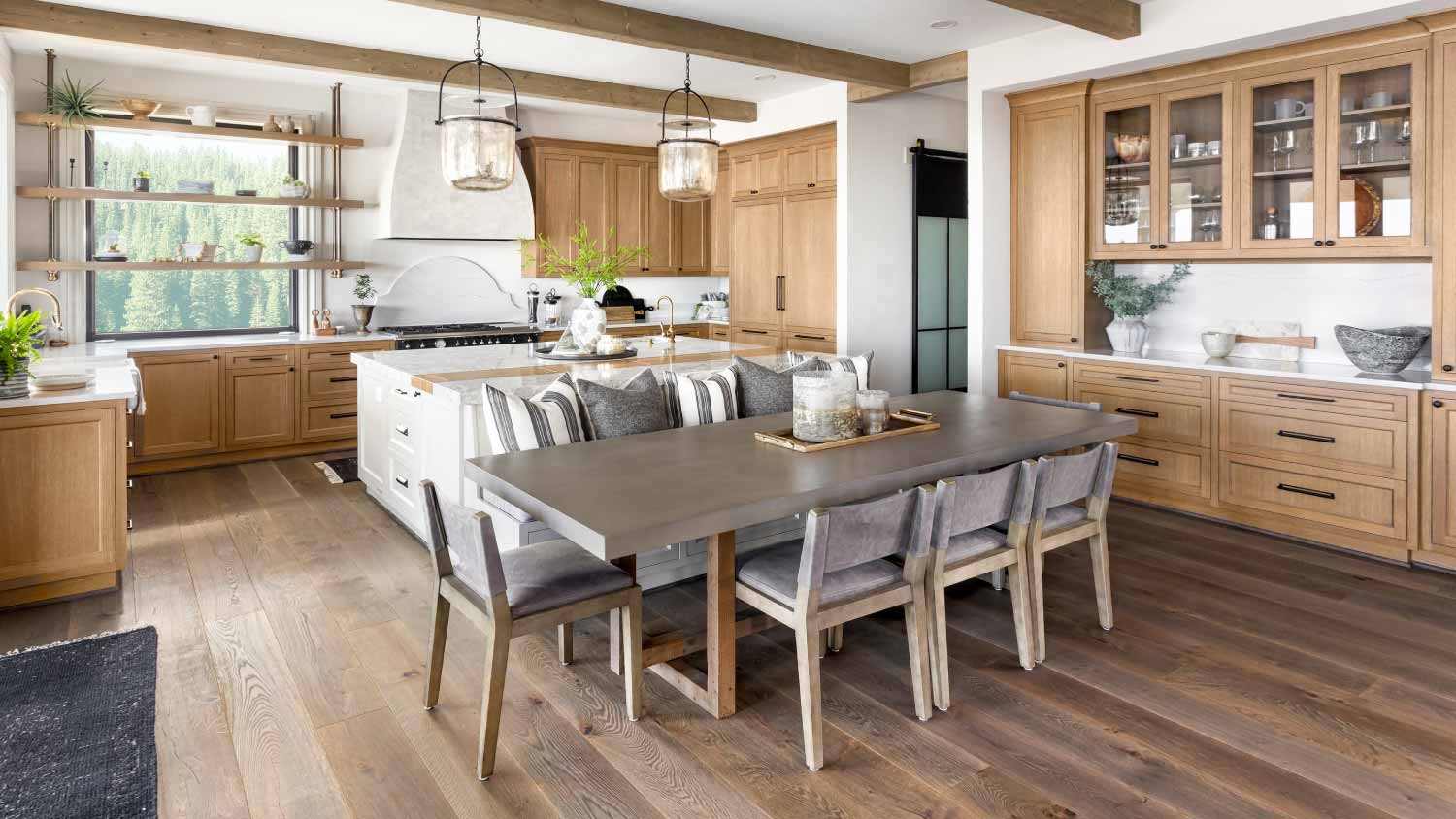
It might seem like cutting down trees (which must be done, unsurprisingly, to make hardwood floors) would be anything but sustainable. However, hardwood flooring can be more sustainable than many alternative options. Dovetail Partners—a 501(c)(3) nonprofit corporation—published a 2019 Consuming Responsibly Report that showed that hardwood flooring had the lowest global warming and ozone depletion potential compared to vinyl tile, ceramic flooring, and nylon carpet.
Hardwood flooring lasts a very long time—up to 100 years (and sometimes even longer) with proper maintenance. This means that you won’t have to replace your floor (and contribute to negative environmental effects) for a very long time if you choose this material. Plus, hardwood is recyclable, and many hardwood flooring manufacturers have well-kept groves of regularly replenished hardwood varieties, planting new trees to compensate for the ones they harvest.
| Pros | Cons |
|---|---|
| Striking look that matches many aesthetics | More expensive than some options |
| Easy day-to-day maintenance | Must refinish every three to 10 years |
| Scraps are recyclable | Susceptible to termite damage |
Best for: Those with a higher flooring budget who prefer a classic look
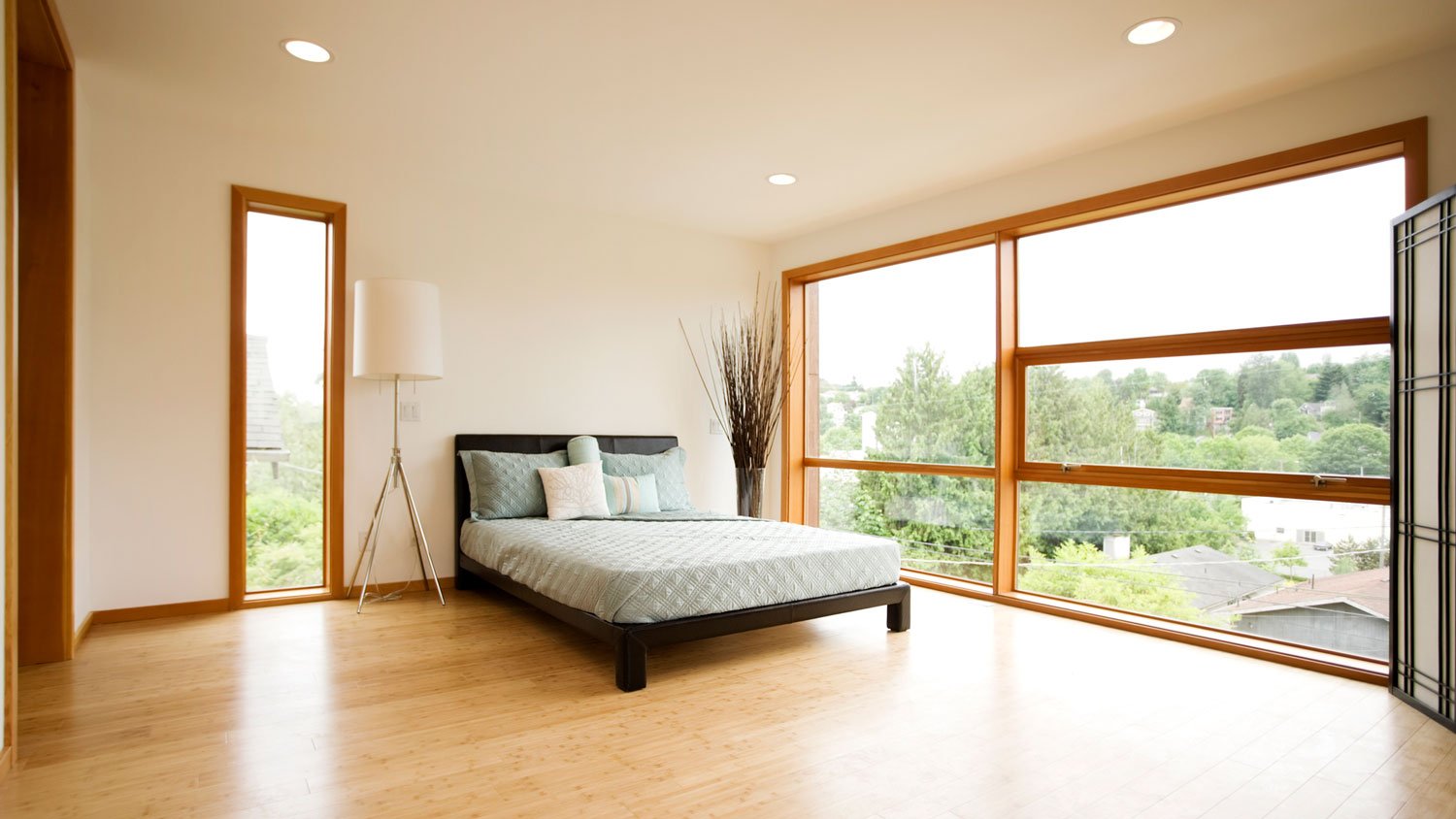
Fun fact: In the right conditions, bamboo can grow nearly 3 feet in a single day, or about 1.5 inches per hour. That translates to serious sustainability when it comes to flooring (as well as other home goods bamboo is being used for these days, including everything from textiles to toilet paper).
Furthermore, bamboo is attractive, offering an appearance similar to hardwood, and affordable, with costs as low as $2 per square foot in some instances. However, it may be more susceptible to water damage than other hard flooring choices, and some of the internationally manufactured flooring options may be made with VOCs and formaldehyde. Always be sure you’re buying from a reputable vendor.
| Pros | Cons |
|---|---|
| Attractive appearance | Susceptible to water damage and damage from pet claws |
| Affordable | International production may increase carbon footprint with shipping |
| Easy to clean and doesn’t require sealant | Only offered in a few colors and designs |
Best for: The modern homeowner with an appreciation for budget-friendly yet chic design
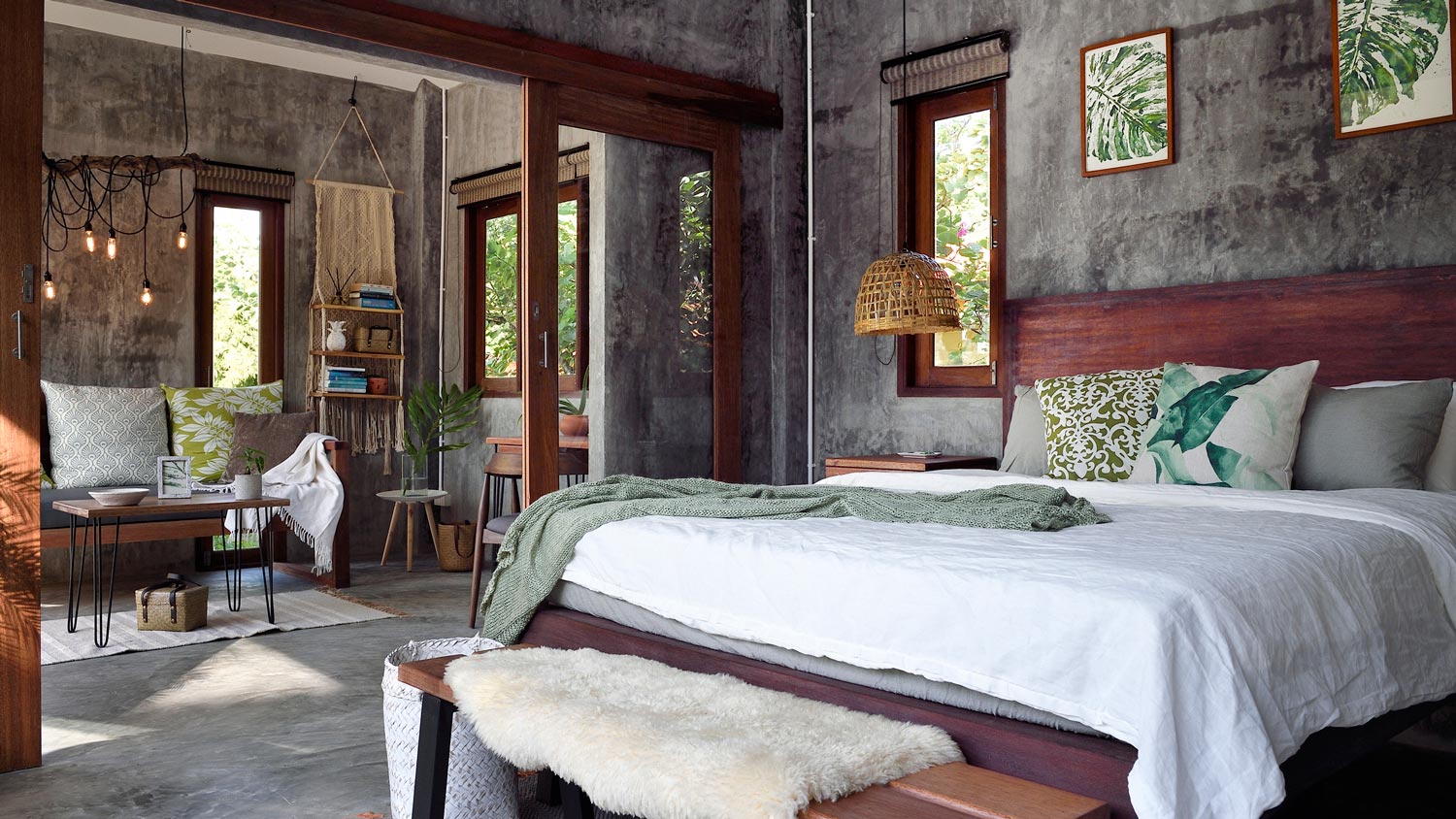
Is concrete flooring eco-friendly? Fortunately, the answer is yes. In some instances, concrete is made with recycled materials and waste byproducts, which means fewer raw materials are consumed to produce it. Concrete itself can also be recycled, though its life span is so long and its durability so substantial that most homeowners won’t need to worry about it. Of course, concrete flooring is as hard as, well, concrete, which means it may not be the comfiest option.
| Pros | Cons |
|---|---|
| Mold- and pest-resistant | Extremely hard and cold underfoot |
| Affordable, with costs as low as $2 per square foot | Loud when struck by shoes or other objects |
| Can easily pair with radiant heat sources and provide good insulation | Limited design choices available |
Best for: High-traffic areas and those who can handle harder-than-average flooring
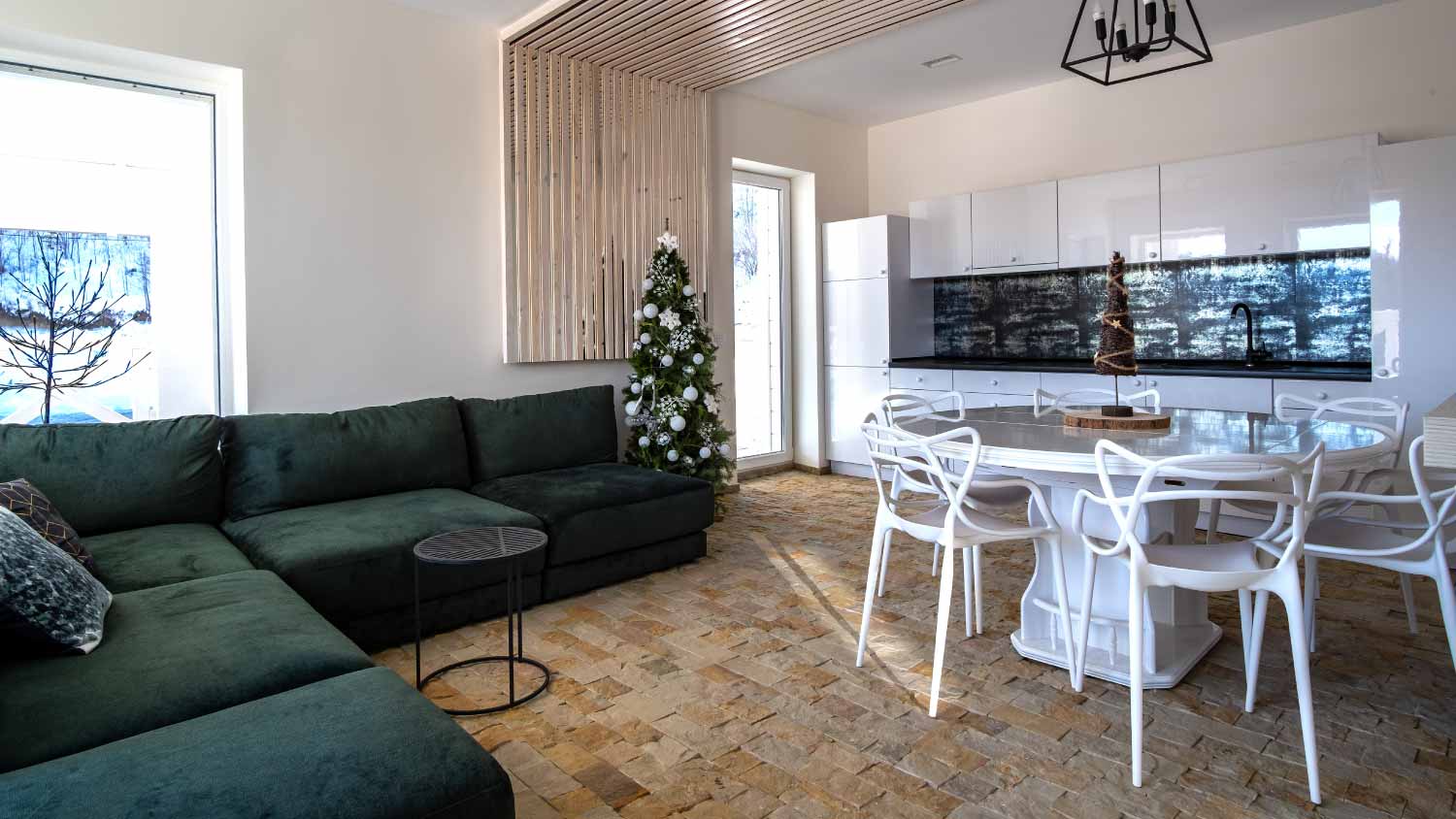
When it comes to natural and easy-to-clean, stone tile is hard to beat. Once a pro lays and grouts it, this flooring material requires little intervention. You can easily clean it using industrial-strength cleaners, water, and good ol’ elbow grease. Of course, stone tile isn’t a soft material by any means, and it may be too hard underfoot for some households. It can also be an expensive option per square foot compared to some others.
| Pros | Cons |
|---|---|
| Extremely durable and long-lasting | Hard underfoot |
| Easy to clean and water-resistant | Loud when struck by shoes or other objects |
| Many different colors and styles to choose from | More expensive—costs $7 to $14 per square foot for a mid-range option |
Best for: Bathrooms, kitchens, and other areas that routinely see a lot of moisture
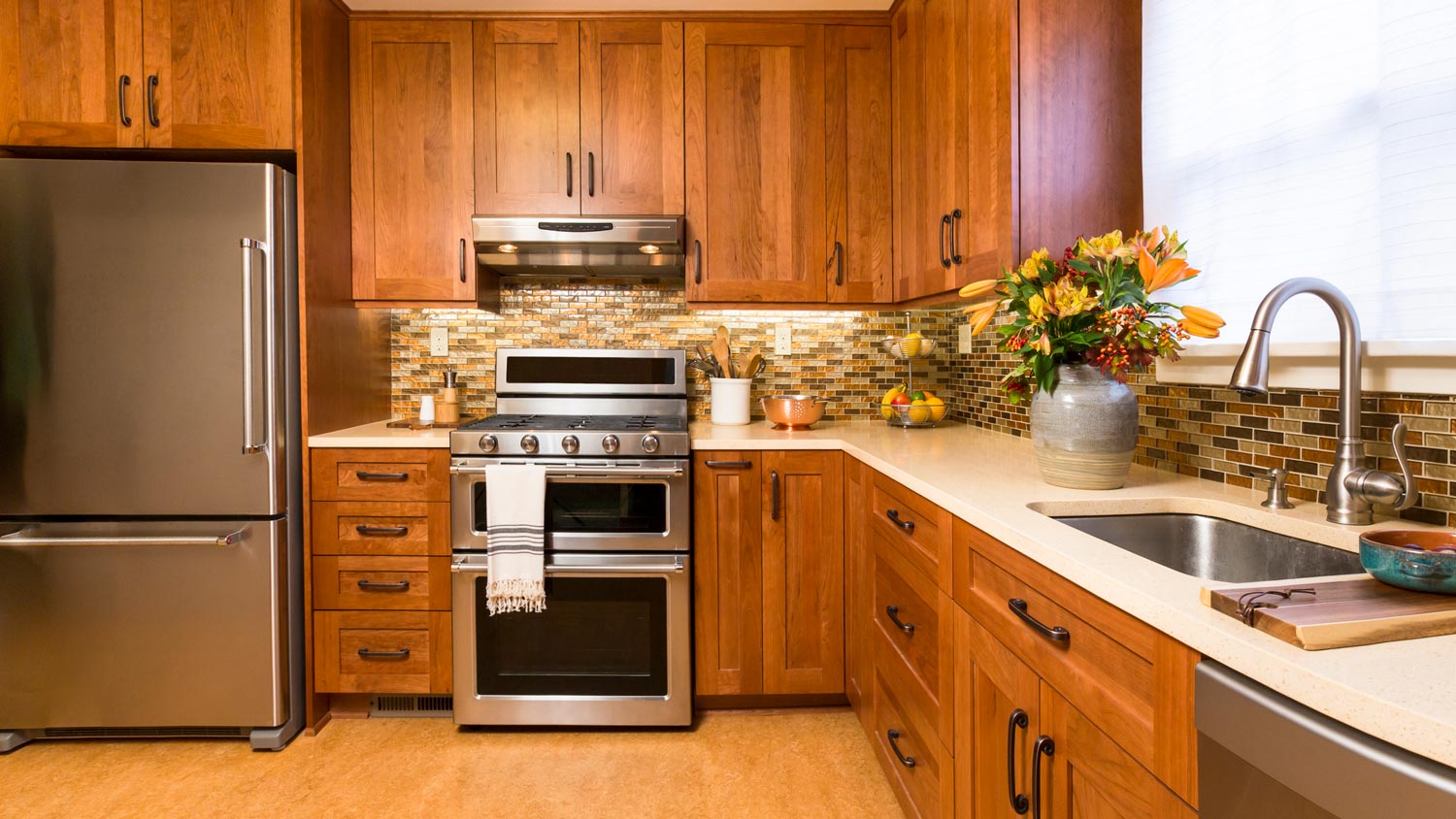
It’s true: Even natural linoleum is a human-made product. There’s no such thing as a “linoleum plant” from which linoleum tiles are harvested. But natural linoleum, which is sold under a lot of different names, including Marmoleum, is made with natural materials like linseed oil, pine resin, sawdust, and ground cork, much of which can be recycled (therefore reducing the overall carbon footprint of each tile).
Linoleum flooring is highly durable and comes in a wide variety of styles and designs. Some linoleum products even look like wood or natural tiles. They are, however, susceptible to water damage, and you’ll have to regularly seal them or keep a pro on standby to do it for you.
| Pros | Cons |
|---|---|
| Affordable—costs as low as $2 per square foot | Can be damaged by humidity or excessive moisture |
| Many designs and styles to choose from | Must be routinely sealed every couple of years |
| Durable and resistant to scratches and marks | May yellow with age |
Best for: People who want the look of hardwood at a lower cost and don’t mind a bit of upkeep
Ready to put your best foot forward? While some flooring materials, like cork, lend themselves to DIY (for experienced homeowners), others, like hardwood, require a professional touch. Going with a pro is always a safe choice because it ensures a professional finish and no back-breaking labor on your part. In either case, if you have questions or are ready to get started on your flooring replacement project, your local flooring company is here to help.
From average costs to expert advice, get all the answers you need to get your job done.

Sustainable, durable, and affordable—these are a few of the benefits of bamboo floors. Here’s a breakdown of bamboo flooring costs to consider.

Updated flooring can make any room in your home feel brand new. Find out flooring installation costs, from materials to labor costs.

Updated flooring can make any room in your home feel brand new. Explore flooring installation costs in St. Louis, MO, from materials to labor costs.

Should you nail or glue baseboards when completing a room’s trim? Here’s how to evaluate the pros and cons of each, then make the right choice for your project.

Updated flooring can make any room in your home feel brand new. Explore flooring installation costs in Washington, D.C., from materials to labor costs.

Allowing laminate flooring to acclimate prior to installation can lead to the best results. Here is how to do it.